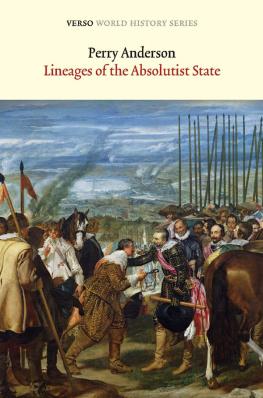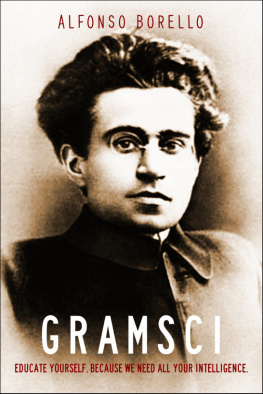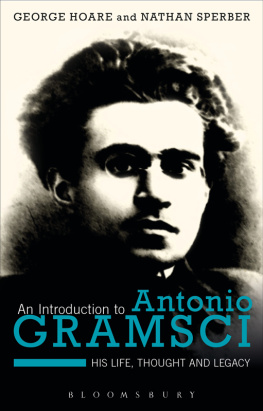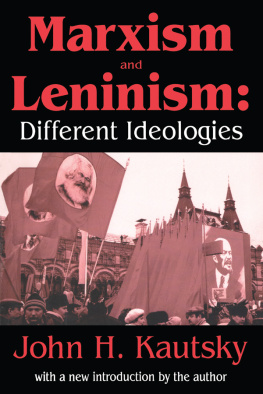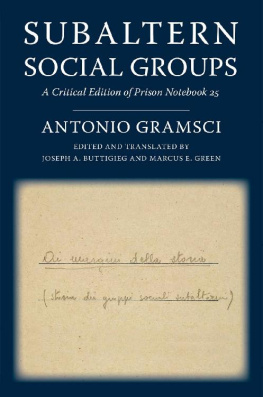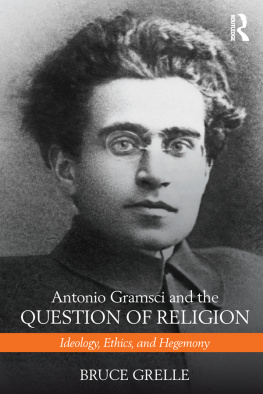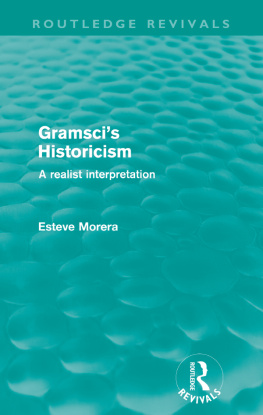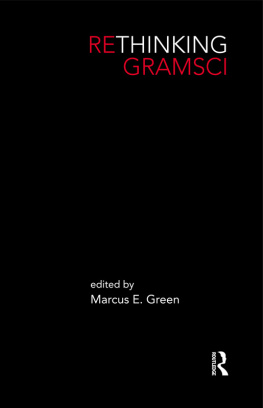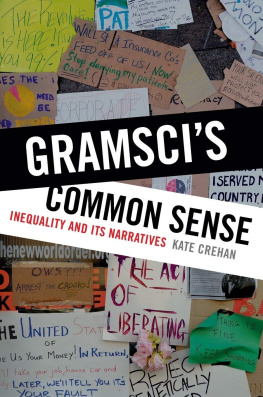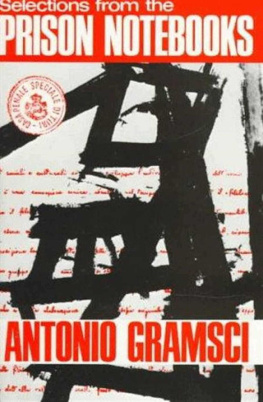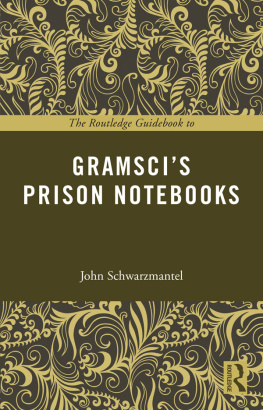No Italian thinker enjoys a greater fame today than Antonio Gramsci. If academic citations and internet references are any guide, he is more influential than Machiavelli. The bibliography of articles and books about him now runs to some 20,000 items. Amid this avalanche, is any compass possible? The Prison Notebooks first became available, thematically pre-packaged and politically expurgated, in Italy in the later 1940s. The first extensive translation from them into any language came in the early 1970s, with Selections in English produced by Quintin Hoare and Geoffrey Nowell Smith, giving them a global readership in what is still probably the most widely consulted single version of his writings. Some four decades later, the history of their worldwide reception is itself a scholarly topic, covering a vast span of usages. The scale of this appropriation, in an epoch so unlike that in which Gramsci lived and thought, has owed much to two features of his legacy that set it apart from that of any other revolutionary of his time.
The first was its multidimensionality. The range of topics covered in the Prison Notebooksthe history of leading European states; the structure of their ruling classes; the character of their dominion over the ruled; the function and variation of intellectuals; the experience of workers and the outlook of peasants; the relations between state and civil society; the latest forms of production and consumption; questions of philosophy and education; the interconnexions between traditional or avant-garde and popular or folkloric culture; the construction of nations and the survival of religions; and, not least, the ways and means of passing beyond capitalism and sustaining socialismhad, and has, no equal in the theoretical literature of the left. The range was not only topical but spatial, since Italy combined an advanced capitalist industry in the North with an archaic pre-capitalist society in the South, and the Notebooks came from a direct experience of both, capable in another time of speaking to First and Third World readers alike. There was a lot to choose from.
The second magnetic attraction of this writing lay in its fragmentation. In prison, Gramscis notes were laconic, exploratory jottings for works he was never able to compose in freedom. That made them, as David Forgacs would point out, suggestive rather than conclusive, inviting imaginative reconstruction after his death, into one kind of totalisation or another. Gramsci occupied a central place in this line. A product of that collective project was an essay that I published in 1974 attempting to resume the tradition, Considerations on Western Marxism.
A year later the first critical edition of the notebooks Gramsci composed in prison appeared in Italy, the fruit of years of meticulous work by Valentino Gerratana, a Communist scholar of outstanding sobriety and dignity. With this in hand, in late 1976 I wrote the text that ensues. The intention of Antinomies was twofold, philological and historical: to look closely at the usage of central concepts in the Prison Notebooks, in a way that had not been done before, and to reconstruct the political contexts in which they originated and to which their meanings referred. The effect of doing so was, equally, twofold: to show the oscillations and contradictions in even, or perhaps particularly, the most striking and original themes of the Notebooks, with the intelligible reasons for these; and to demonstrate that, politically speaking, Gramsci was a revolutionary of Leninist stamp, whose strategic thought could only be understood within the parameters of the Third International and its debates.
Conceived as a sequel to Considerations, Antinomies was composed in late 1976, and came out in New Left Review at the beginning of 1977. The following year it was published as a book in Italy under the title Ambiguit di Gramsci. There the Italian Communist Party had for some time declared that the way forward for the party and the country lay in a Historic Compromise with Christian Democracy, and in the summer of 1976 had achieved its highest ever level of electoral support, with over a third of the vote. In the wake of this success it was now backing a government of National Solidarity led by Giulio Andreotti. This was a turn that in different ways had its counterpart in most of the Communist parties of Western Europe. Theorised as Eurocommunism by the Spanish party leader Santiago Carrillo, then helping to restore the Bourbon monarchy in Madrid, it was reproduced in its fashion by the Communist party in France, where the new doctrine had early adepts. Common to all variants was rejection of the principles on which the Third International had been founded, and commitment henceforward to gradual parliamentary reforms as the West European path to socialism; the Italian version adding a declaration of loyalty to NATO. In these conditions, the image of Gramscifor the PCI, a national icon who could not be casually abandonedhad to be adjusted to the needs of the time, as a far-sighted precursor of the partys conversion to peaceful, incremental progress towards more advanced forms of democracy.
The Italian Socialist Party, under its new leader Bettino Craxi, did not, however, intend to let itself be marginalised by the Historic Compromise, and soon showed its ability to wrong-foot its larger rival. An early sign was the appearance in the autumn of 1976 of four articles in its monthly journal Mondoperaio by leading intellectualstwo historians, Massimo Put on the defensive, the PCIwhich had been organising its own discussion to explain how its current positions were a creative development of the heritage of Gramsciat first responded testily, then mindful of the need for national solidarity, more temperately but for the most part lamely, in early 1977. These exchanges overlapped with the appearance of Antinomies in New Left Review. But not following the Italian political scene closely enough at that point, I was unaware of them.
Later that year, to commemorate the fortieth anniversary of Gramscis death, the PCI organised its largest-ever conference on his thought. Held in Florence, and attended by numerous foreign participants, it marked, in the words of the richest history of the For this was also the year of the widespread student and youth revolt against the Historic Compromise and all that it stood for, which became the Autonomia. In February, the head of the PCIs trade union wing, who had told workers they must make economic sacrifices to prop up the National Solidarity government, was driven off the campus of Rome University amid angry scenes, and by the autumn Bologna was the stage of a virtual uprising. The Autonomia would fade, but the PCI never recovered from the alienation its connubium with Christian Democracy caused in the most politicised spirits of the younger generation. By the end of 1978 the failure of the Historic Compromise even on its own termsthe DC had taken Communist votes and yielded nothing in returnwas obvious, and the PCI was duly punished at the elections the following year, beginning its slow descent towards dissolution.


